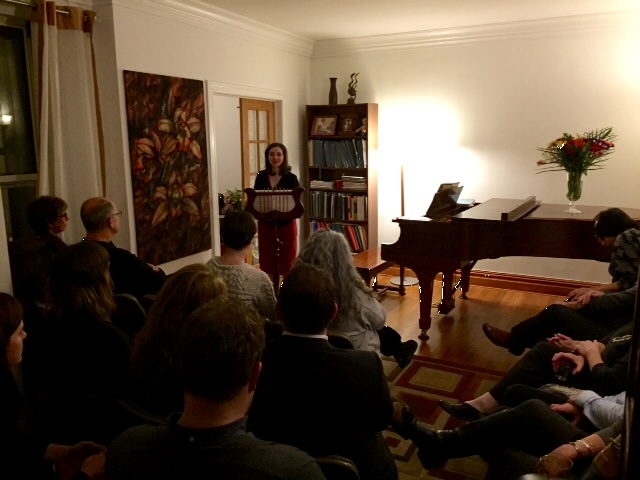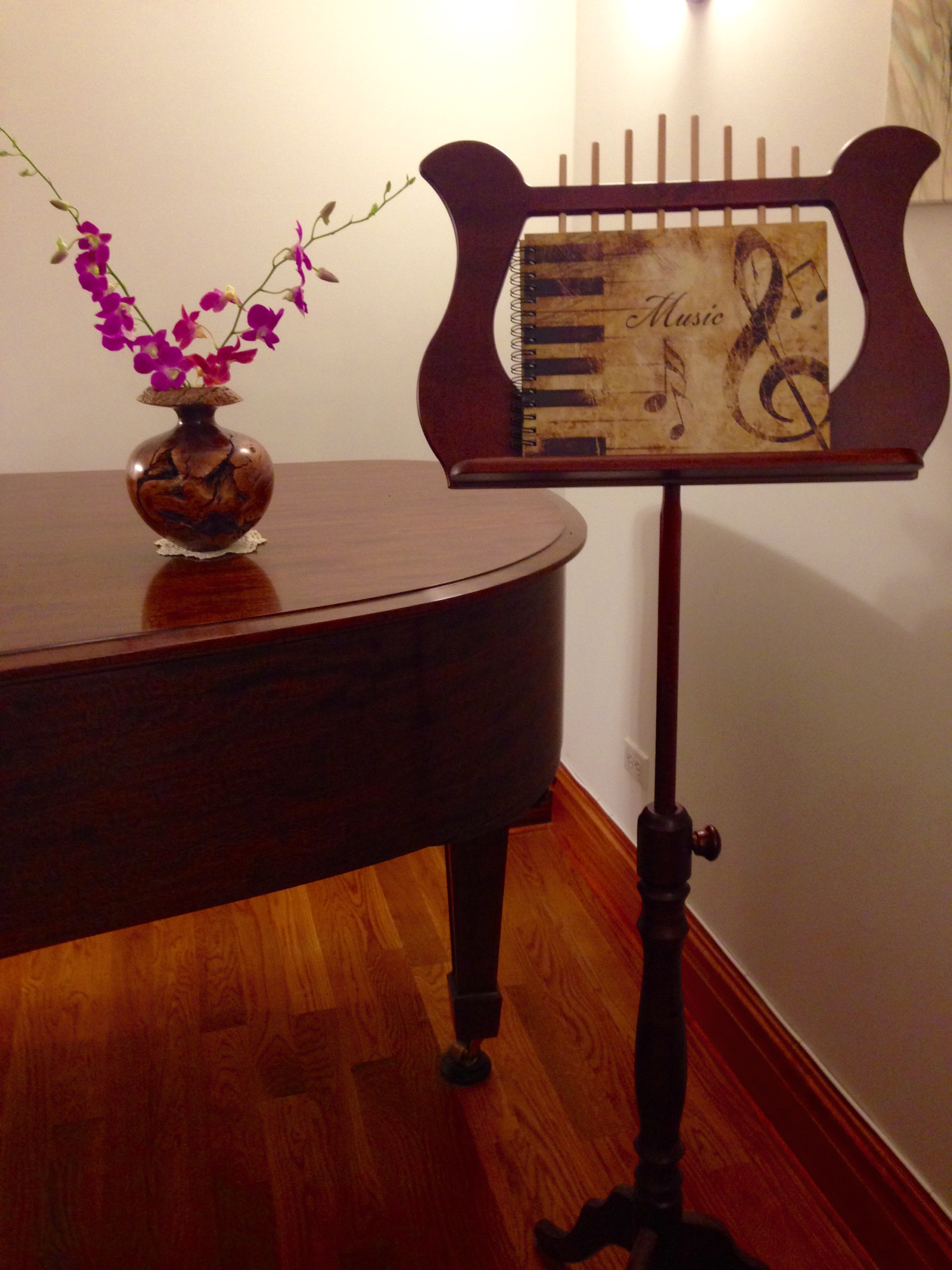French Impressions
French music is impressive for its colorful and innovative palette of sounds and sonorities. This evening’s program will feature four such colorful French works for violin and piano by Ravel, Fauré, Messaien, and Saint-Saëns.
Ravel’s one-movement Sonata in A minor, otherwise known as Sonata Posthume, was his youthful student work composed in 1897. Compared to Ravel’s popular and often played Violin Sonata in G Major, composed later in the 1920s, his Sonata Posthume is seldom heard today and was only rediscovered long after his death, first published as late as 1975. It is lush, post-Romantic work, replete with impressionistic, cascading piano textures and soaring violin melodies. While the Sonata follows more or less a typical structural design of a sonata-allegro form, it occupies a unique, fantasy-like sound world of its own, with bold coloristic effects and atmospheric harmonies that pay homage to Cesar Frank and Gabriel Fauré, the latter being Ravel’s great mentor and lifetime friend.
Fauré, who was Ravel’s teacher and a pupil of Saint-Saens, is considered one of the foremost French composers of his generation whose lyrical and refined musical style had a great impact on many 20th-century composers. His Sonata in A Major for violin and piano, op. 13 certainly exemplifies one of his early masterworks. It was composed in 1876 and was dedicated to the violinist Paul Viardot who premiered the work in Paris with Faure at the piano in 1877. The Viardots were a well-renowned musical family and Paul Viardot’s sister, Marianne, was even briefly engaged to Fauré. The Sonata is cast in four flowing and elegant movements. The first movement, Allegro molto, unfolds with a surging sweep of lyrical lines reminiscent of Schumann’s quintessentially poetic style, which gracefully interlace the movement throughout with a compelling forward momentum. In contrast to the joyful and extraverted Allegro molto, the tender second movement, Andante, marked pp, is cast in melancholy D-minor tonality and is quite understated and grave in character. The sorrowful violin melody soars above the haunting syncopated chords heard in the piano part in a somber dialogue, conveying a wistful and shadowy tone to the movement as a whole. The playful Scherzo that follows is full of French wit and charm. Marked Allegro vivo, it is light, fast, and whimsical in character in its outer sections with a more ruminative and impassioned F-sharp minor middle section. This playful scherzo style, as originally coined by Felix Mendelssohn, influenced later French scherzo movements by Saint-Saens, Ravel, and Debussy. The highly emotive and lyrical finale, Allegro quasi presto, concludes the sonata on a bold and brilliant note with a rapturous A-Major flourish.
Similar to the preceding works by Ravel and Faure, Olivier Messiaen’s Théme et variations delights in its wide-ranging coloristic harmonies, atmospheric sonorities, as well as complex, innovative rhythms, dense chordal textures, and spiritual overtones. Composed in 1932, this ten-minute work was written as a wedding present for Messiaen’s first wife, the violinist Claire Delbos, whom he married and with whom he premiered the work that same year. The Theme, marked Modéré, presents a poignant, lyrical theme in the violin part accompanied by slow, mysterious-sounding chords in the piano part, concluding with a hushed, unresolved chord. Variation 1, Modéré (berceur), begins with a gentle, lullaby-like, chromatically enriched melody in the piano solo later echoed by the violin. Toward the middle section, the chords grow in dynamic intensity and lush texture before vanishing into the distance. The livelier Variation 2, Modéré, un peu vif, reinvents the theme in a more grotesque guise, with piano’s opening playful staccato melody later imitatively bounced back and forth between the two players, gradually dying off into a distance. Variation 3, Modéré, avec éclat, is pompous and bold in character, with thick piano texture and rapidly shifting time signatures. It leads attacca into the impassioned and angst-filled Variation 4, Vif et passioné, toccata-like in style with its ongoing perpetual motion. After several energetic waves of crescendo that culminate with a resounding violin trill over the piano tremolo, marked fff, the theme makes a transcendent, almost spiritual comeback in Variation 5, Trés Lent, in piercing ffff dynamic and high and bright register before it gradually subsides in emotional intensity, accompanied by a dynamic drop to a ppp at the conclusion of this colorful and adventurous musical journey.
Camille Saint-Saëns, an important forerunner of Ravel and a teacher of Fauré, who was his favorite pupil and later his closest friend, composed in neo-Classical French style, marked by aristocratic refinement, brilliance, and charm. We find these signature traits in his Sonata no. 1 in D minor for violin and piano, op. 75 – a riveting and virtuosic staple of the Romantic French violin-piano repertoire, composed in 1885. The sonata boasts a large-scale, Beethovenian design, cast in four movements. The huge opening movement, Allegro agitato, begins with a gripping first subject in D-minor, filled with great inward tension, and stated in stark unison by both players. The second subject, on the contrary, is more relaxed and lyrical in tone, with cascading arpeggiated sonorities, recast in relative F-Major, marked dolce espressivo. Following a fugato-like, contrapuntal development, the angst-filled opening music of the first subject returns, this time with a sinister tremolo in the piano part. The relaxed second subject returns at the end of the movement as a transitional bridge that segues into the Adagio, a dreamy and expressive second movement. The Allegretto moderato that follows is a sparkling Scherzo movement full of French grace and charm, reminiscent in its light, transparent, and whimsical style to that of Mendelssohn’s fairy-like scherzo movements. As the scherzo comes to a close, a chorale-like progression in the piano part leads attacca into the virtuosic tour de force finale, Allegro molto, set in sweeping perpetual motion that drives the work to its exhilarating, fff, D-Major ending.
– Program Notes by Dr. Yelena Grinberg





